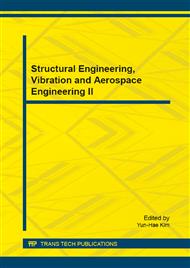p.148
p.152
p.156
p.161
p.166
p.171
p.175
p.180
p.185
Wind Tunnel Experiment on the Wind Effects of Low-Rise Buildings in Rural Areas
Abstract:
At the present stage, no detailed specifications and codes about wind effects on low-rise buildings in rural areas were made in Chinese. In order to reduce casualties and property loss due to wind damage, the investigation of wind tunnel experiments were carried out. The results indicate that the influence of purlin and front and rear eaves on wind load should be considered in building design. Because a specific blowing angle of wind would produce the largest wind load in the surface of the house. In the structure design, the value of shape coefficient should be increased to a certain degree and also amplify according to windward and leeward roofs.
Info:
Periodical:
Pages:
166-170
Citation:
Online since:
January 2015
Authors:
Price:
Сopyright:
© 2015 Trans Tech Publications Ltd. All Rights Reserved
Share:
Citation:


